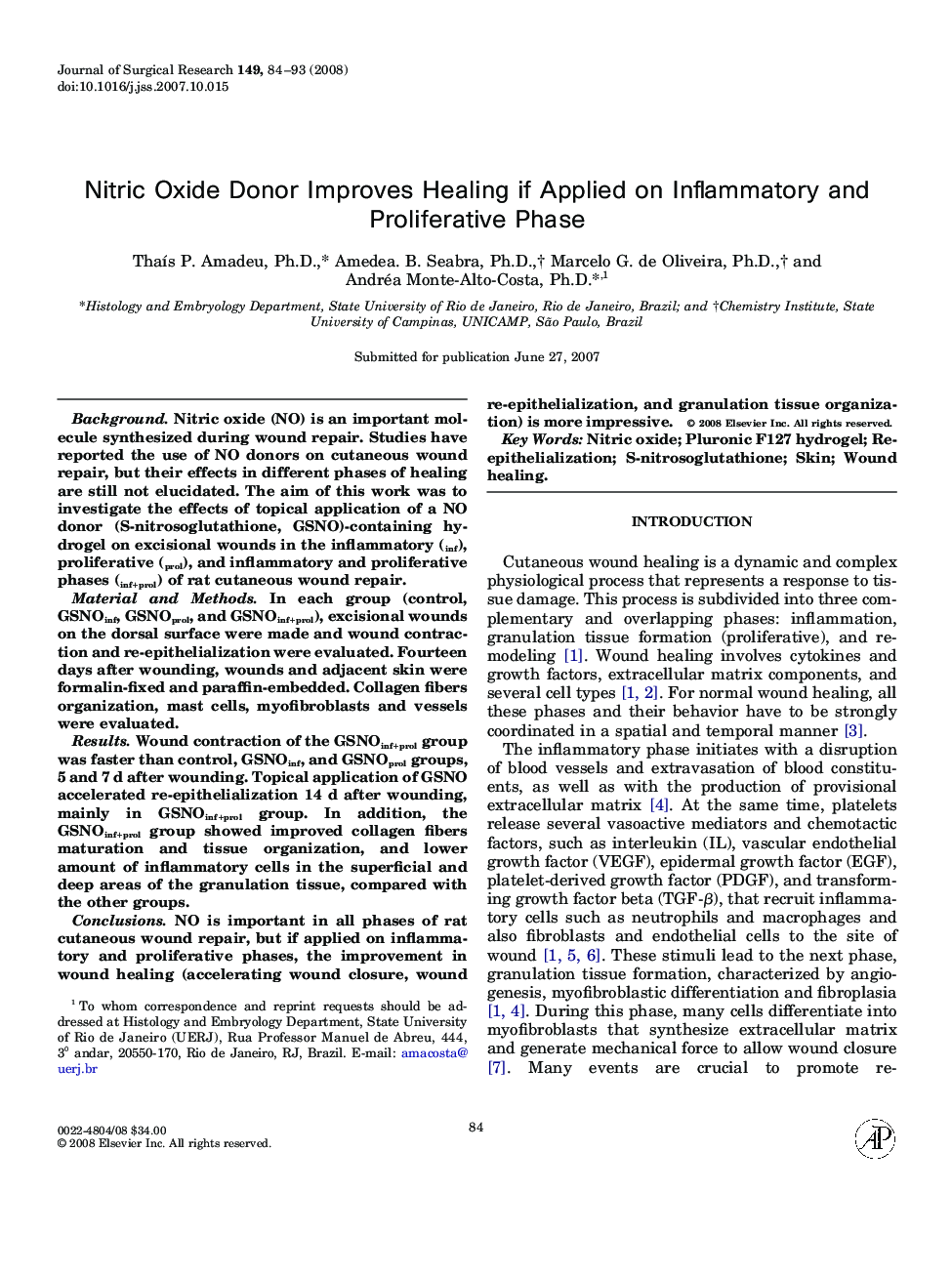| Article ID | Journal | Published Year | Pages | File Type |
|---|---|---|---|---|
| 4304049 | Journal of Surgical Research | 2008 | 10 Pages |
BackgroundNitric oxide (NO) is an important molecule synthesized during wound repair. Studies have reported the use of NO donors on cutaneous wound repair, but their effects in different phases of healing are still not elucidated. The aim of this work was to investigate the effects of topical application of a NO donor (S-nitrosoglutathione, GSNO)-containing hydrogel on excisional wounds in the inflammatory (inf), proliferative (prol), and inflammatory and proliferative phases (inf+prol) of rat cutaneous wound repair.Material and MethodsIn each group (control, GSNOinf, GSNOprol, and GSNOinf+prol), excisional wounds on the dorsal surface were made and wound contraction and re-epithelialization were evaluated. Fourteen days after wounding, wounds and adjacent skin were formalin-fixed and paraffin-embedded. Collagen fibers organization, mast cells, myofibroblasts and vessels were evaluated.ResultsWound contraction of the GSNOinf+prol group was faster than control, GSNOinf, and GSNOprol groups, 5 and 7 d after wounding. Topical application of GSNO accelerated re-epithelialization 14 d after wounding, mainly in GSNOinf+prol group. In addition, the GSNOinf+prol group showed improved collagen fibers maturation and tissue organization, and lower amount of inflammatory cells in the superficial and deep areas of the granulation tissue, compared with the other groups.ConclusionsNO is important in all phases of rat cutaneous wound repair, but if applied on inflammatory and proliferative phases, the improvement in wound healing (accelerating wound closure, wound re-epithelialization, and granulation tissue organization) is more impressive.
